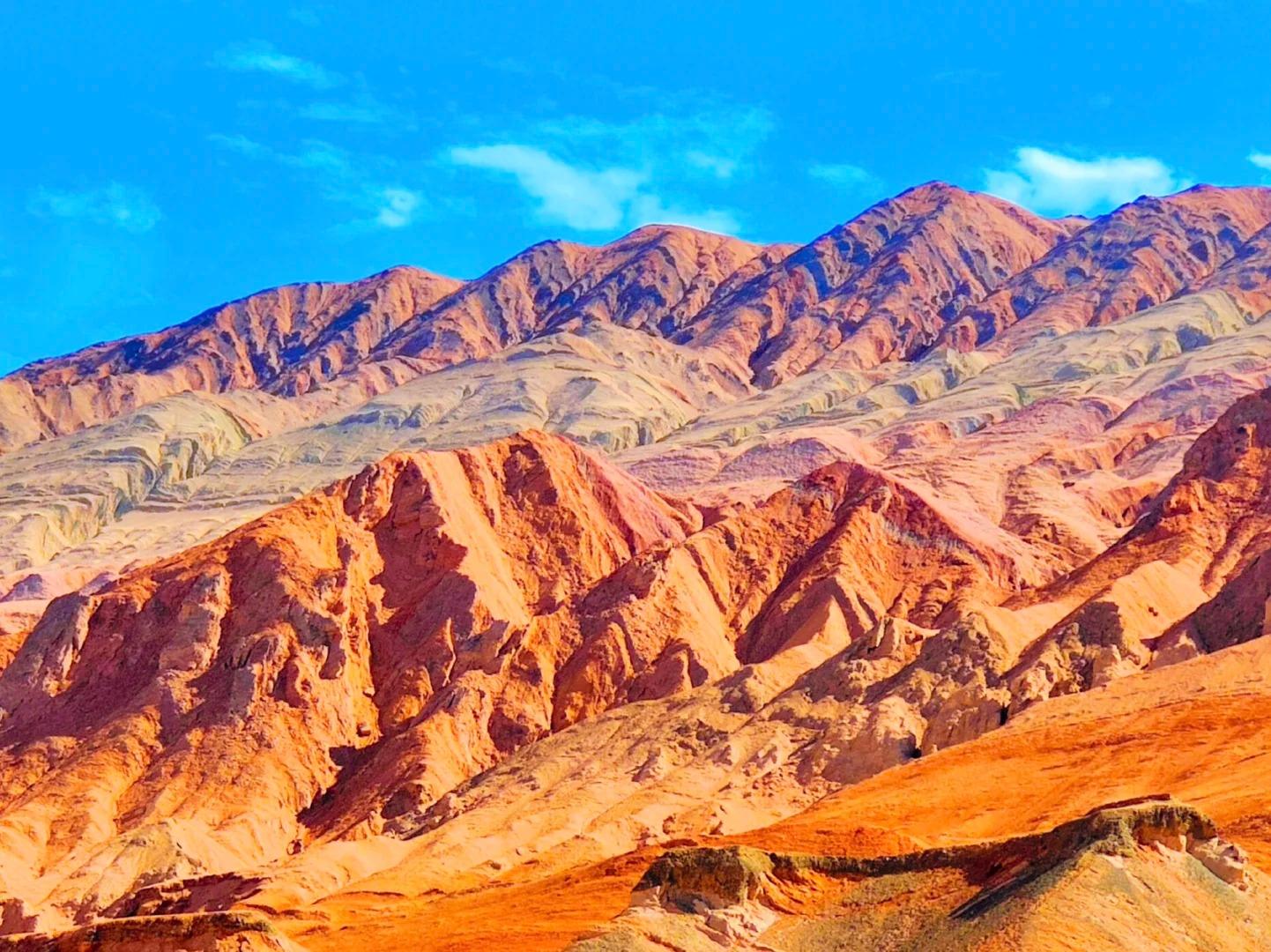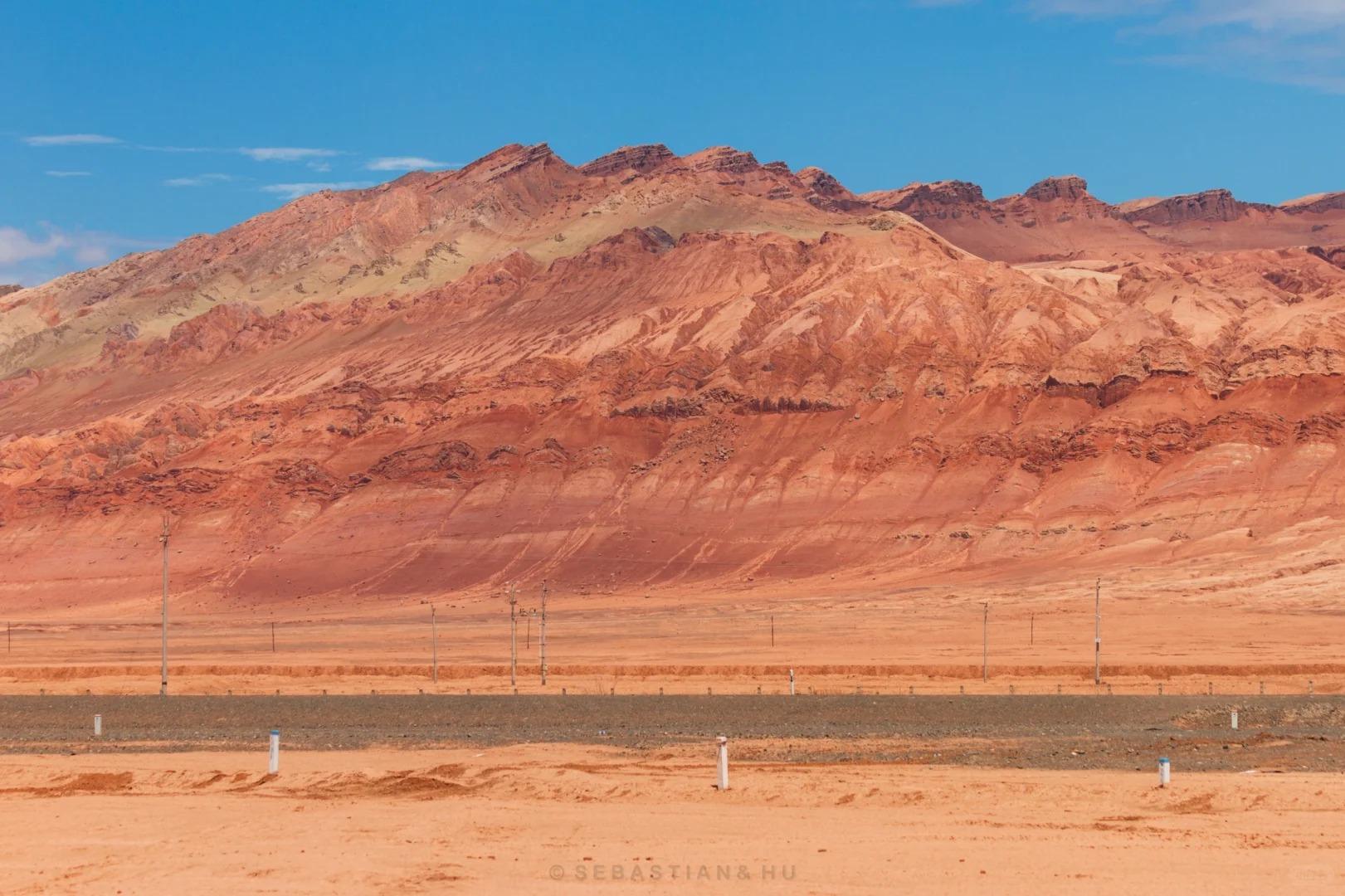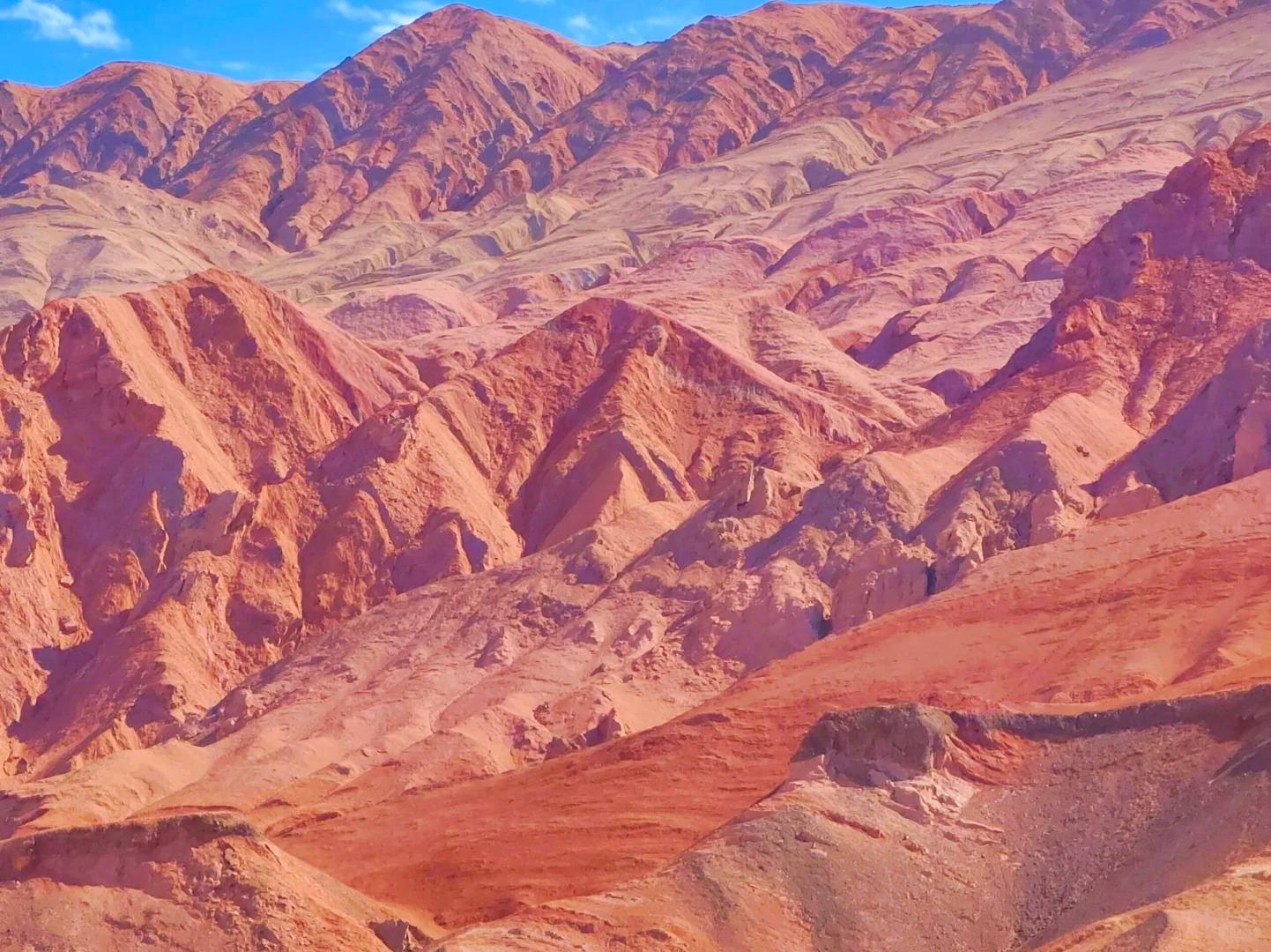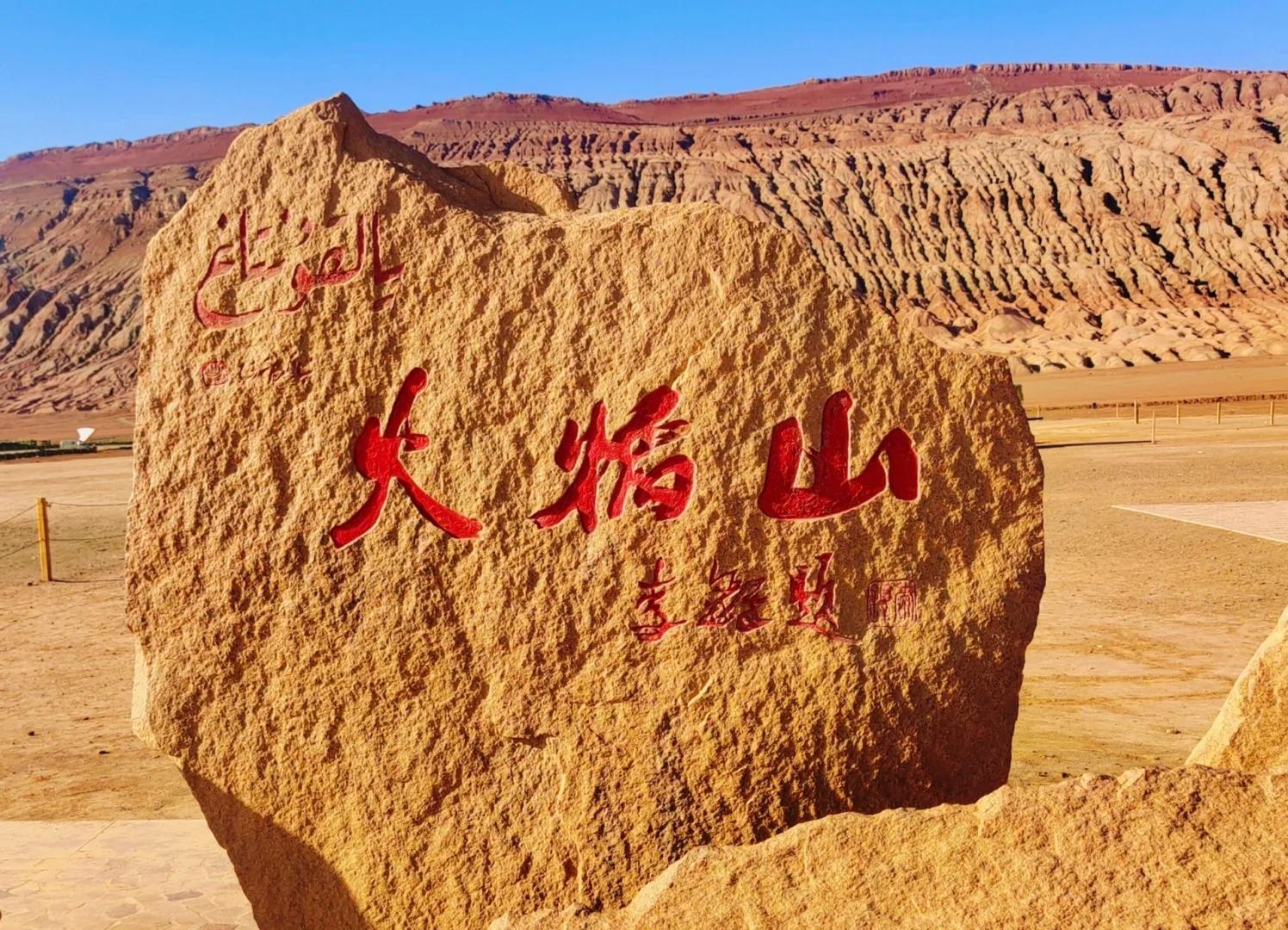Visiting Information
| Information | Details |
|---|---|
| Chinese Name | 火焰山 (Huǒyàn Shān) |
| Location and Address | Gaochang District, Turpan, Xinjiang Uyghur Autonomous Region, China |
| Opening Hours | Open 24 hours (Best to visit during daylight hours) |
| Entrance Fee | 40 CNY |
| How to Get There | By Metro: Not available By Bus: Take bus no. 3 from Turpan city center to Flaming Mountains By Taxi: About 30 minutes from Turpan city center |
| Best Time for Visit | May to October, early morning or late afternoon |
| Contact Info | +86 995 8550700 |
Overview
The Flaming Mountains, located in the Turpan Depression of Xinjiang, China, are a unique geological formation known for their striking red sandstone landscape. Stretching about 100 kilometers long and 5-10 kilometers wide, these barren, eroded hills are famous for their fiery appearance, especially during midday when the sun’s heat creates mirages that make the mountains appear to be engulfed in flames.
Historical Background
The Flaming Mountains have a rich historical and cultural significance. They feature prominently in the classic Chinese novel “Journey to the West,” where they are described as an obstacle that the legendary Monkey King had to overcome. Archaeologists have discovered evidence of human activity in the area dating back to the Stone Age. The region was also part of the ancient Silk Road, playing a crucial role in trade and cultural exchange between East and West.

Architectural Features
- Bezeklik Thousand Buddha Caves: Located at the foot of the Flaming Mountains, these caves contain ancient Buddhist murals dating back to the 5th to 14th centuries. They represent a significant example of Buddhist art along the Silk Road.
- Gaochang Ancient City Ruins: Although not directly part of the Flaming Mountains, this nearby site showcases the remains of an important stop along the Silk Road, providing insight into the historical context of the region.
- Flaming Mountain Stone Park: This modern addition features stone carvings and sculptures that depict scenes from “Journey to the West” and local legends associated with the Flaming Mountains.
Cultural Importance
The Flaming Mountains hold significant cultural importance in Chinese mythology and literature. Their appearance in “Journey to the West” has made them a symbol of challenge and perseverance in Chinese culture. The area is also important to the local Uyghur people, who have lived in the region for centuries and have their own legends and stories associated with the mountains.
Surrounding Attractions
- Turpan Karez System: This ancient irrigation system, consisting of underground channels, wells, and small reservoirs, is a marvel of ancient engineering. It has been crucial for agriculture in this arid region for over 2,000 years.
- Grape Valley: Located near the Flaming Mountains, this lush oasis offers a stark contrast to the barren landscape. It’s famous for its vineyards and provides a cool retreat from the heat of the mountains.
- Jiaohe Ancient City Ruins: One of the best-preserved earthen cities in the world, Jiaohe was an important site along the Silk Road. Its ruins provide a fascinating glimpse into life in ancient times.

Photography Opportunities
- Panoramic Views: The vast expanse of the Flaming Mountains offers stunning panoramic shots, especially during sunrise or sunset when the light accentuates the red hues of the sandstone.
- Mirage Effects: During the hottest part of the day, photographers can capture the heat-induced mirages that give the mountains their “flaming” appearance.
- Cultural Elements: The Bezeklik Caves and stone carvings in the area provide opportunities for capturing the blend of natural beauty and cultural heritage.
- Contrast Shots: The stark contrast between the barren mountains and the nearby Grape Valley oasis offers unique compositional opportunities.
Modern Importance
- Tourism: The Flaming Mountains are a major tourist attraction in Xinjiang, contributing significantly to the local economy and helping to showcase the region’s natural beauty and cultural heritage.
- Geological Research: The unique geological formation of the Flaming Mountains provides valuable opportunities for scientific study, particularly in the fields of geology and climate research.
- Cultural Preservation: The area around the Flaming Mountains, including the Bezeklik Caves, is an important site for the preservation and study of ancient Buddhist art and Silk Road history.
- Environmental Awareness: The extreme environment of the Flaming Mountains serves as a stark reminder of the effects of climate change and the importance of environmental conservation in arid regions.

FAQ
- What are the Flaming Mountains famous for?
The Flaming Mountains are famous for their striking red sandstone landscape, their appearance in the Chinese novel “Journey to the West,” and the extreme temperatures they experience. - What’s inside the Flaming Mountains?
While the Flaming Mountains themselves are a natural formation, nearby you’ll find the Bezeklik Thousand Buddha Caves, a stone park with sculptures, and various viewing platforms. - Are the Flaming Mountains free?
No, there is an entrance fee of 40 CNY to visit the Flaming Mountains scenic area. - Are the Flaming Mountains worth visiting?
Yes, the Flaming Mountains are worth visiting for their unique landscape, cultural significance, and the surrounding historical sites. They offer a one-of-a-kind experience in China. - What to do in the Flaming Mountains?
At the Flaming Mountains, you can enjoy the scenic views, visit the Bezeklik Caves, explore the stone park, take photographs, and learn about the local geology and culture. - How do I get to the Flaming Mountains in the local city?
From Turpan city, you can take bus no. 3 directly to the Flaming Mountains. Alternatively, you can hire a taxi or join a tour group. The journey takes about 30 minutes from the city center. - How to visit the Flaming Mountains?
To visit the Flaming Mountains, it’s best to go early in the morning or late afternoon to avoid the extreme midday heat. Wear sun protection and bring plenty of water. You can explore the viewing platforms, visit the nearby caves, and enjoy the stone park. It’s recommended to allocate at least 2-3 hours for the visit.



